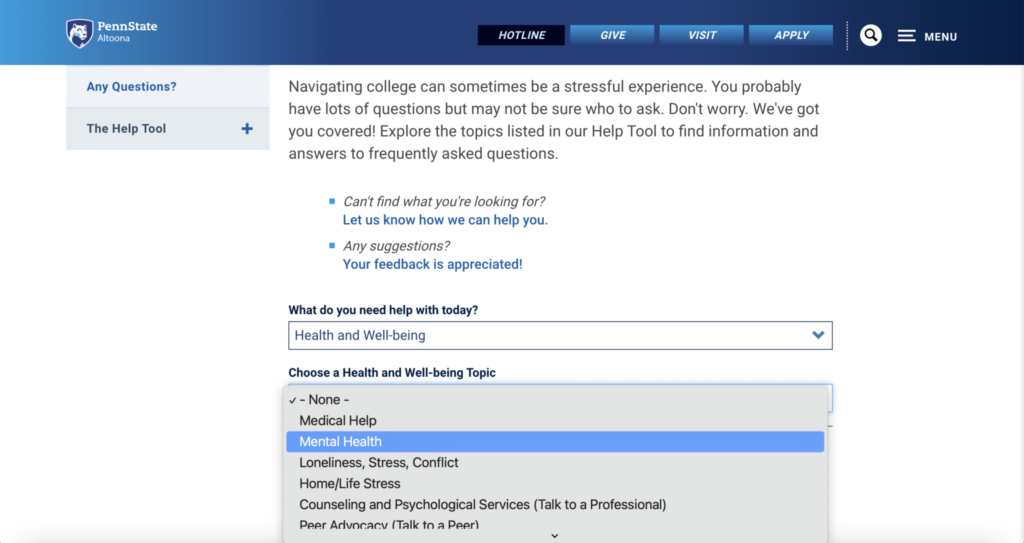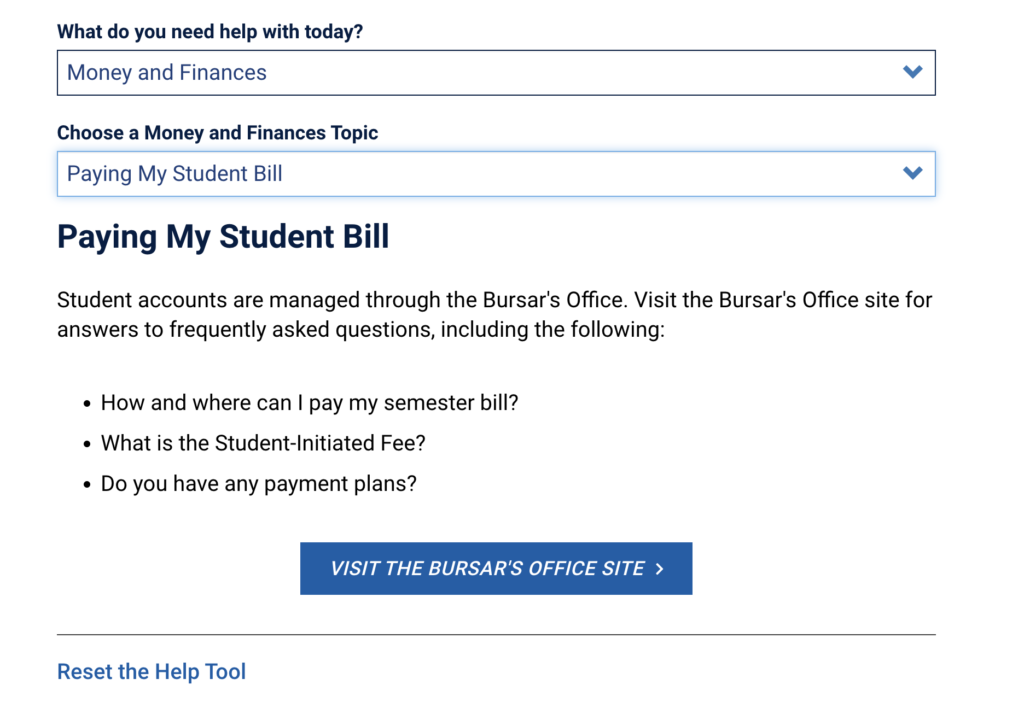Our ongoing grant research focuses on improving the capacity of academic librarians and library workers in serving community college students in the area of college fluency. A key aspect of this research involves identifying and promoting resources that cater to the diverse needs of students, both on and off campus. Particularly in the wake of the pandemic, colleges across the country have been creating tools that focus on the holistic guidance of students. These tools serve as valuable case studies for our research, offering insights and methods for librarians who wish to incorporate college fluency initiatives into their own institutions.
One such college is Penn State Altoona, a four-year school of approximately 2,500 students that has recently developed a web-based tool called The Help Tool. Its purpose is to assist students in navigating various campus resources and provide information on student life, academics, finances, and general well-being. By presenting a list of categories such as crisis support, necessities like food and housing, and student accommodations, the tool guides students to relevant information. As students make their selections, additional drop-down menus appear to narrow their search.

What makes the tool noteworthy is its integration of “non-academic” categories with academic ones, implicitly recognizing the continuum of different aspects of student experience. This reinforces our researchers’ previous contention that student needs are academic needs, and that facilitating student success requires attention to the entire spectrum of environmental supports. Interestingly, the tool prioritizes resources addressing immediate and pressing needs like crisis support and food/housing insecurity, placing them ahead of the other options.
In contrast to other college websites that require students to navigate through multiple links to access different resources, The Help Tool provides a unified and streamlined user experience. Here, students can find all the relevant information on a single webpage, avoiding a potentially frustrating “wild goose chase” across various websites with inconsistent designs and formatting. The tool does present a fair number of external links, but they come alongside robust information about different resources, departments, and contact details, reducing the need for extensive searching and providing easier access to support.

To further ensure ease of access, the tool is conveniently located under the Student Success menu bar on Penn State Altoona’s main site. And in the event that students are unable to find the specific information they are seeking within the provided categories and subcategories, a write-in request form is provided to assist them further. Additionally, The Help Tool offers an added advantage for instructors by allowing them to seamlessly integrate it into their LMS, Canvas. This integration can potentially promote greater awareness among students and instructors alike about the college’s available resources.

As college fluency initiatives gain prominence across the country (whether or not they are labeled as such), it becomes increasingly important for librarians to adapt and acquire new knowledge and skills to effectively address students’ inquiries related to navigating the various dimensions of college life. By learning from successful initiatives like Penn State Altoona’s The Help Tool, librarians at community colleges in particular can enhance their understanding and proficiency in supporting students’ navigation of the college landscape. The Help Tool serves as an excellent example of how technology and user-friendly design can streamline access to resources and services that address students’ material, financial, and other needs.